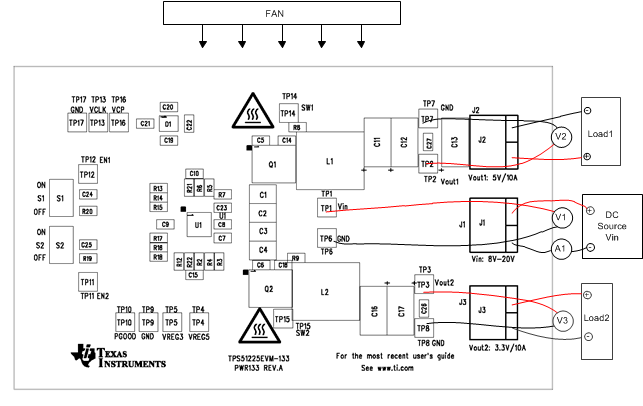SLVU735A June 2012 – February 2022 TPS51225
4.2 Recommended Test Setup
 Figure 4-2 TPS51225EVM-133
Recommended Test Setup
Figure 4-2 TPS51225EVM-133
Recommended Test SetupFigure 4-2 is the recommended test setup for evaluating the EVM. Working at an ESD workstation, make sure that any wrist straps, bootstraps, or mats are connected referencing the user to earth ground before power is applied to the EVM.
Input Connections:
- Prior to connecting the DC input source, VIN, it is advisable to limit the source current from VIN to 10-A maximum. Make sure VIN is initially set to 0 V and connected as shown in Figure 4-2.
- Connect a voltmeter, V1, at TP1 (VIN) and TP6 (GND) to measure the input voltage.
- Connect a current meter, A1, to measure the input current.
Output Connections:
- Connect Load1 to J2 and set Load to constant resistance mode to sink 0 ADC before VIN is applied
- Connect a voltmeter, V2, at TP2 (Vout1) and TP7 (GND) to measure the output1 voltage.
- Connect Load2 to J3 and set Load to constant resistance mode to sink 0 ADC before VIN is applied.
- Connect a voltmeter, V3, at TP3 (Vout2) and TP8 (GND) to measure the output2 voltage.
Other Connections:
Place a fan as shown in Figure 4-2 and turn it on, making sure air is flowing across the EVM.